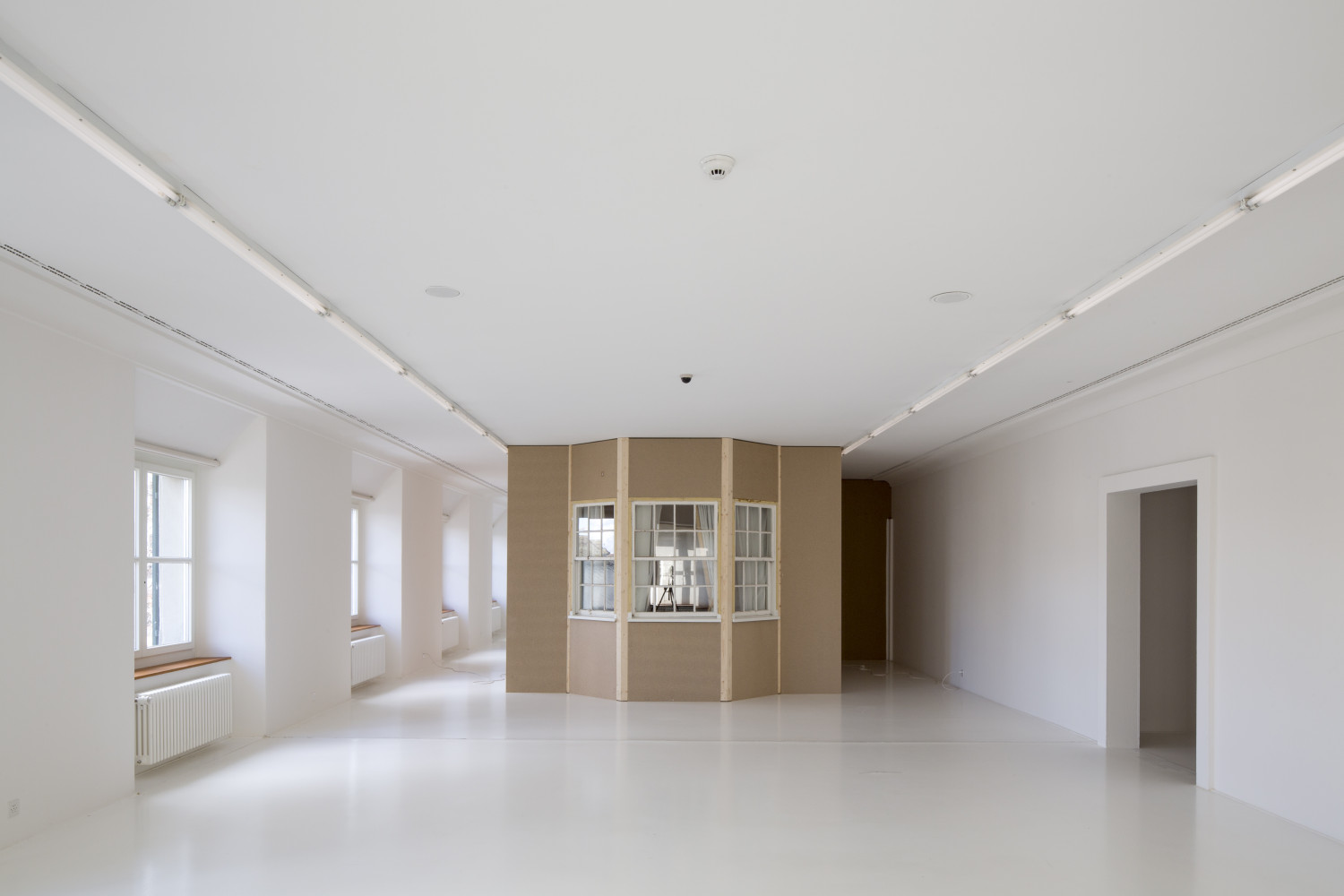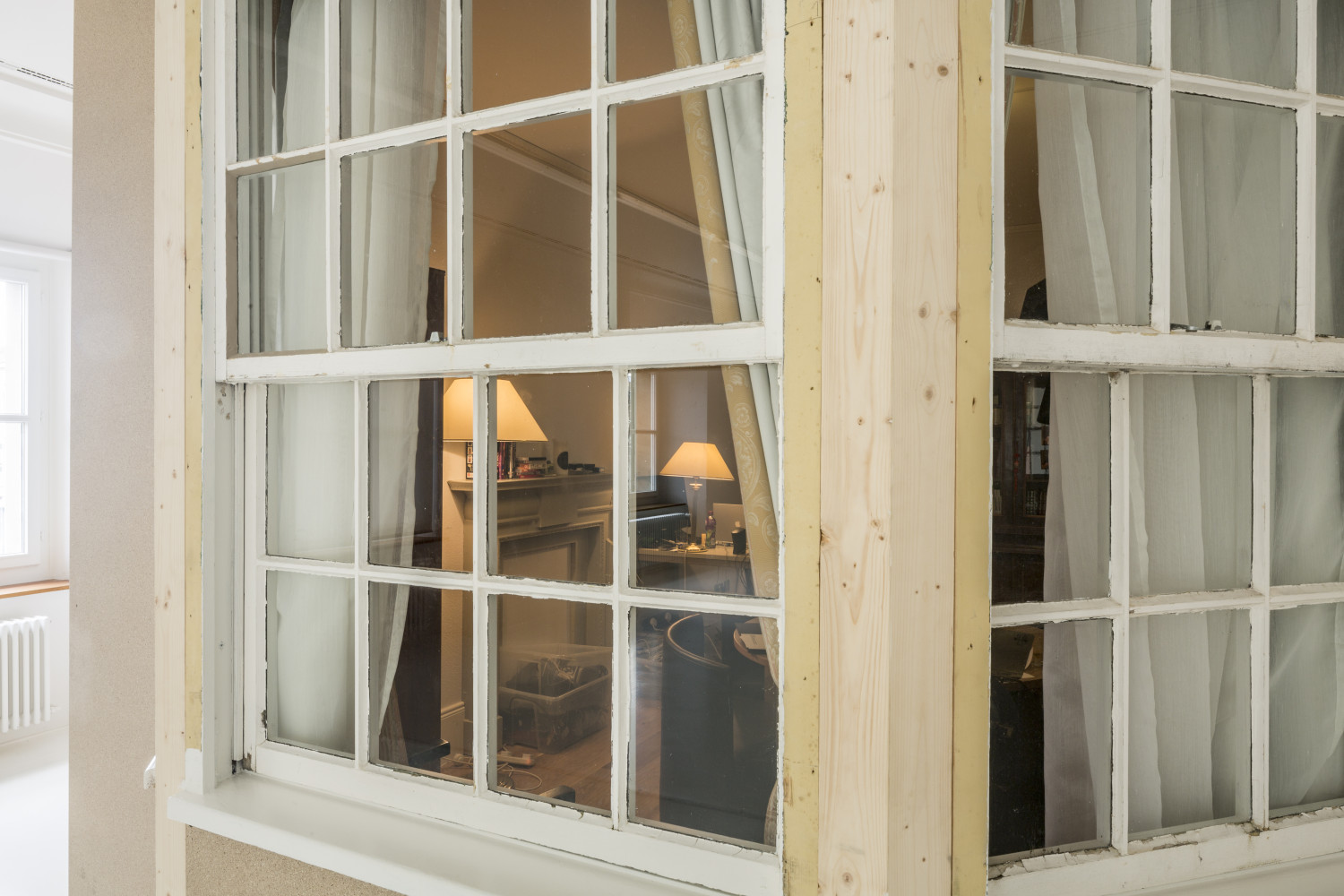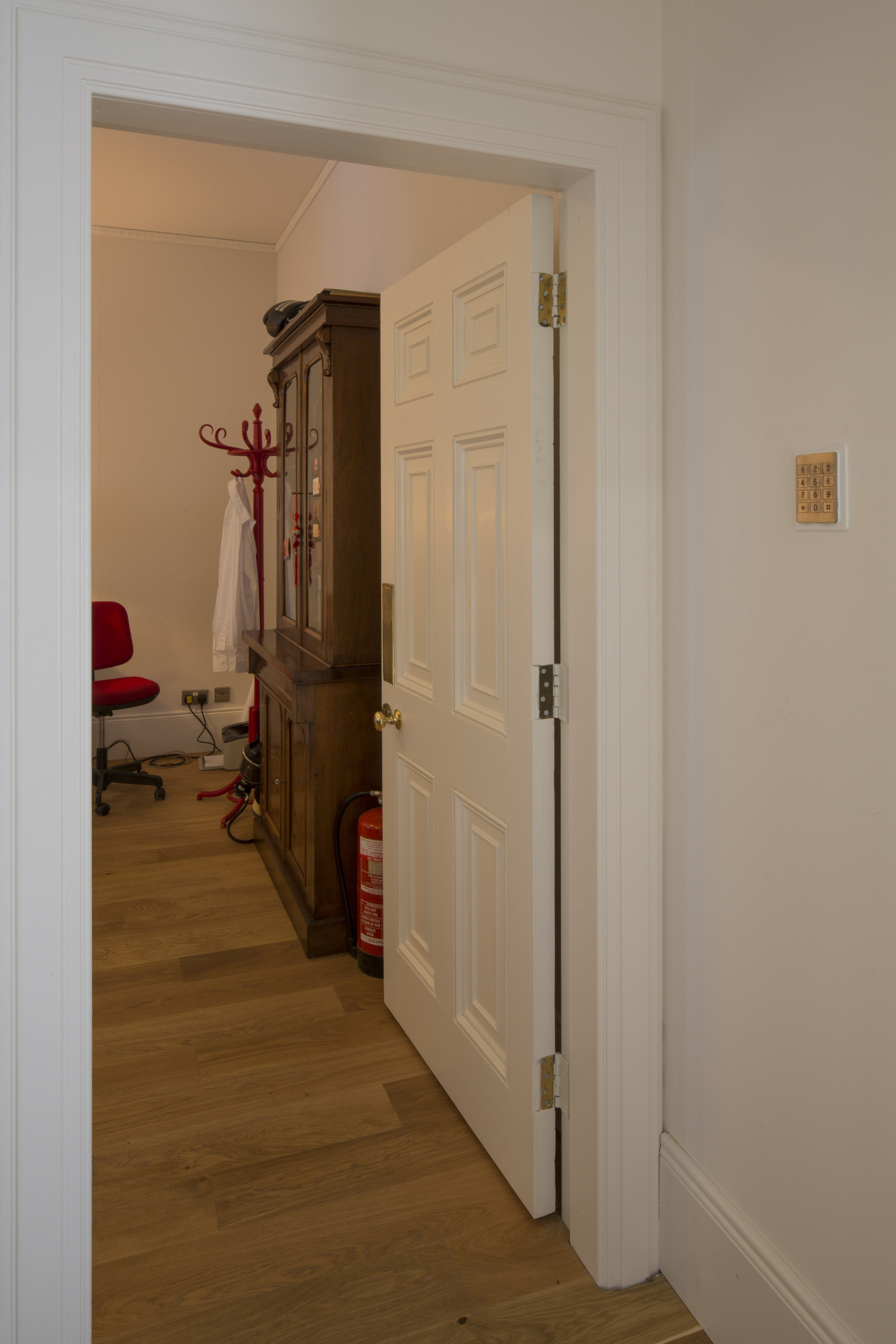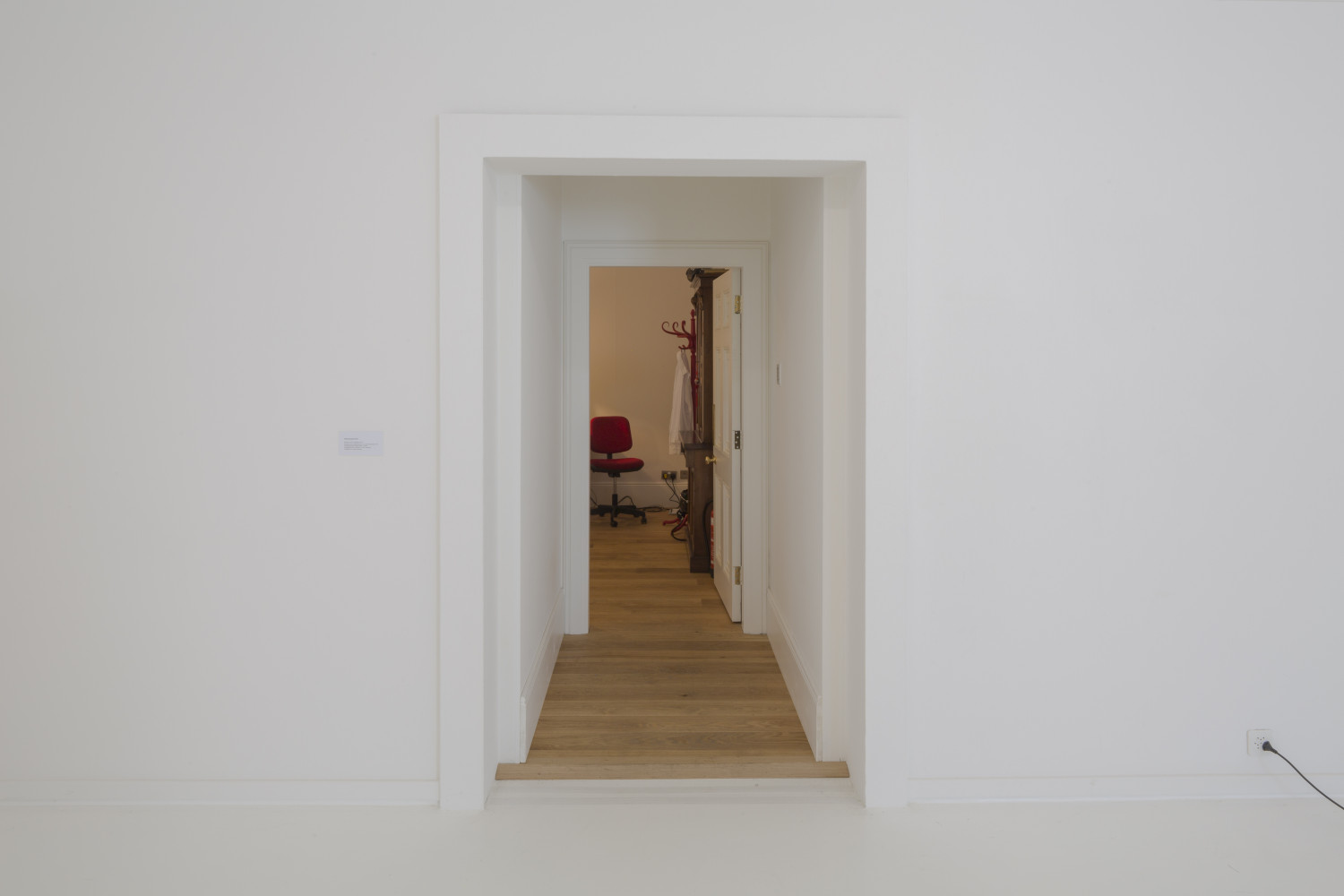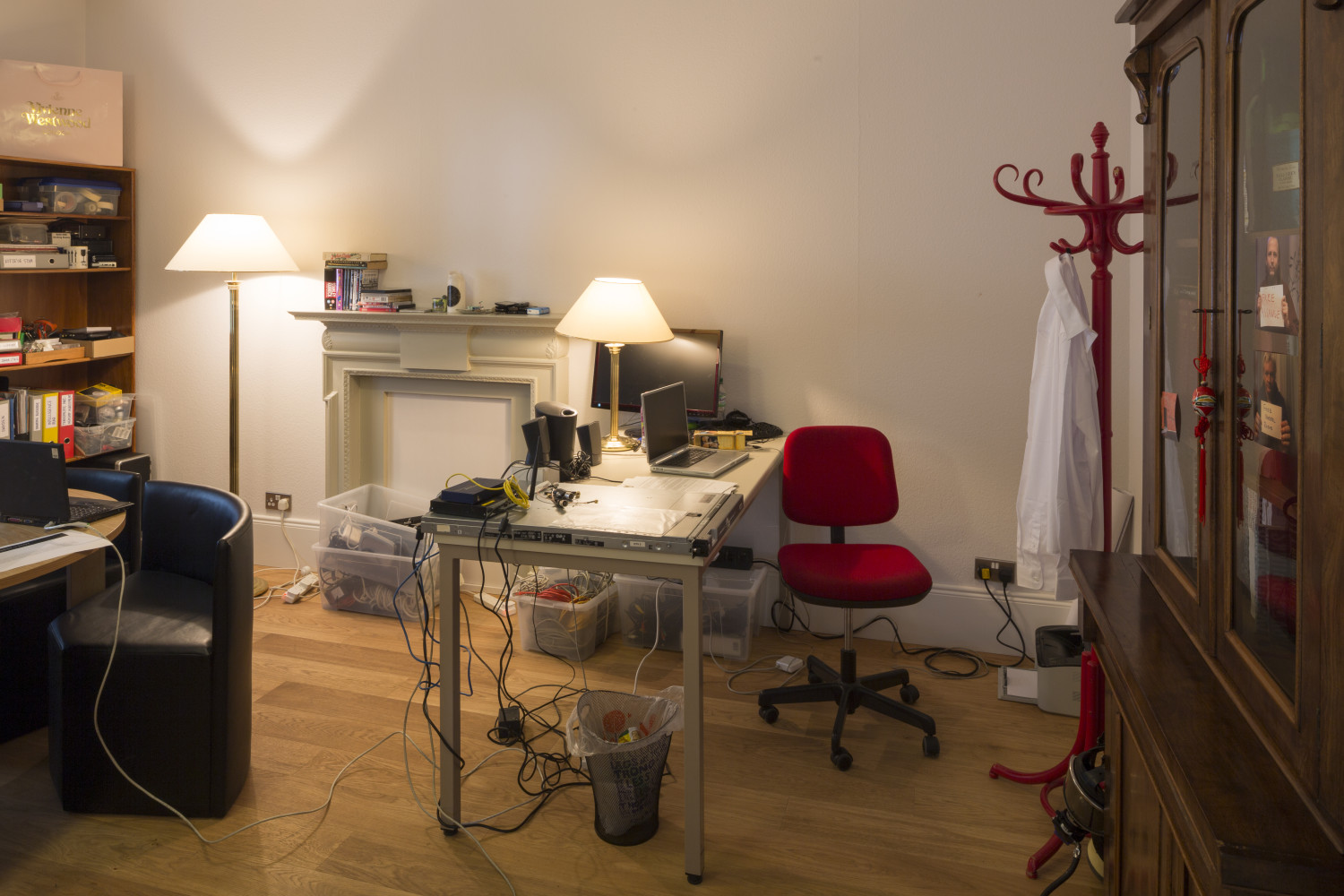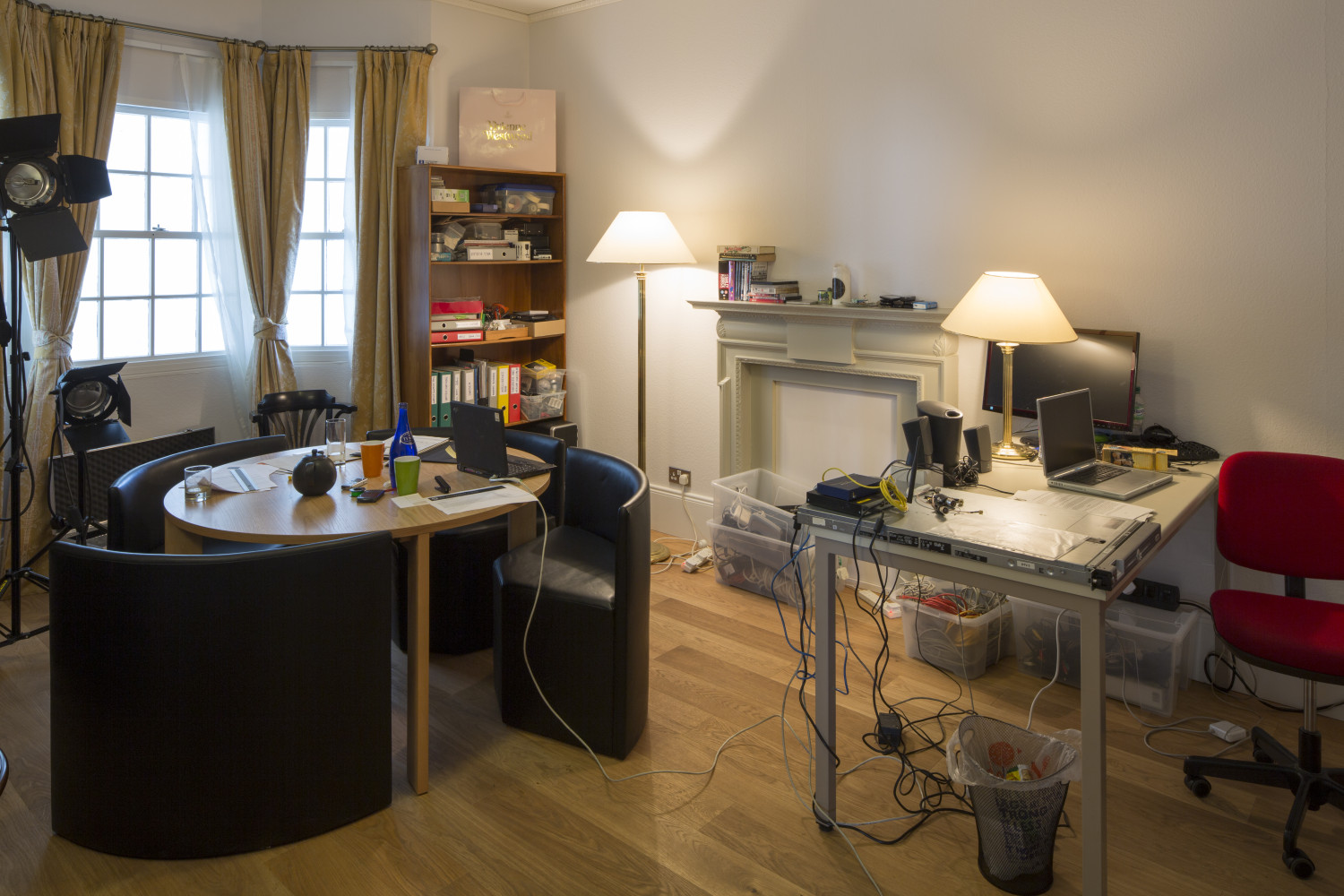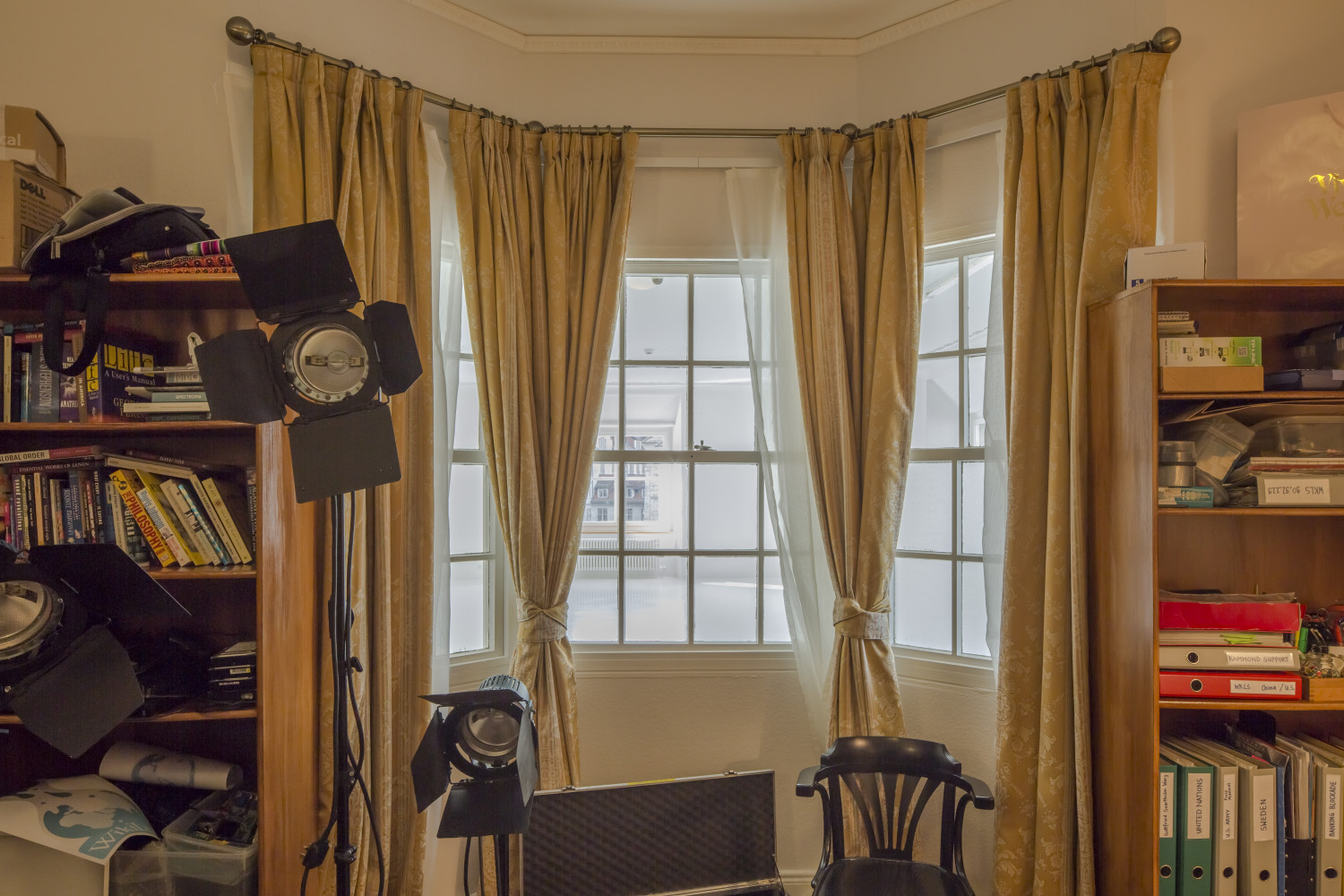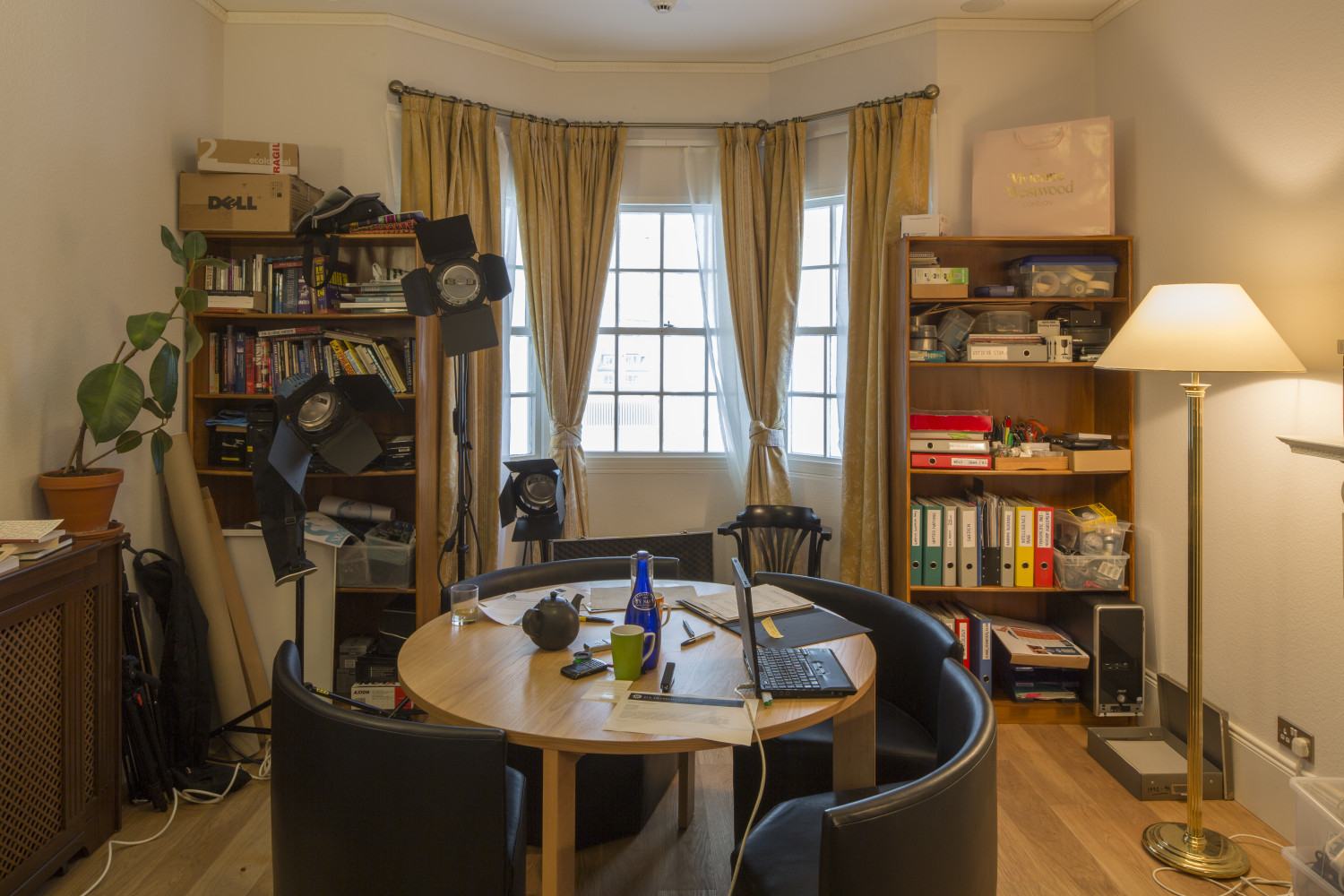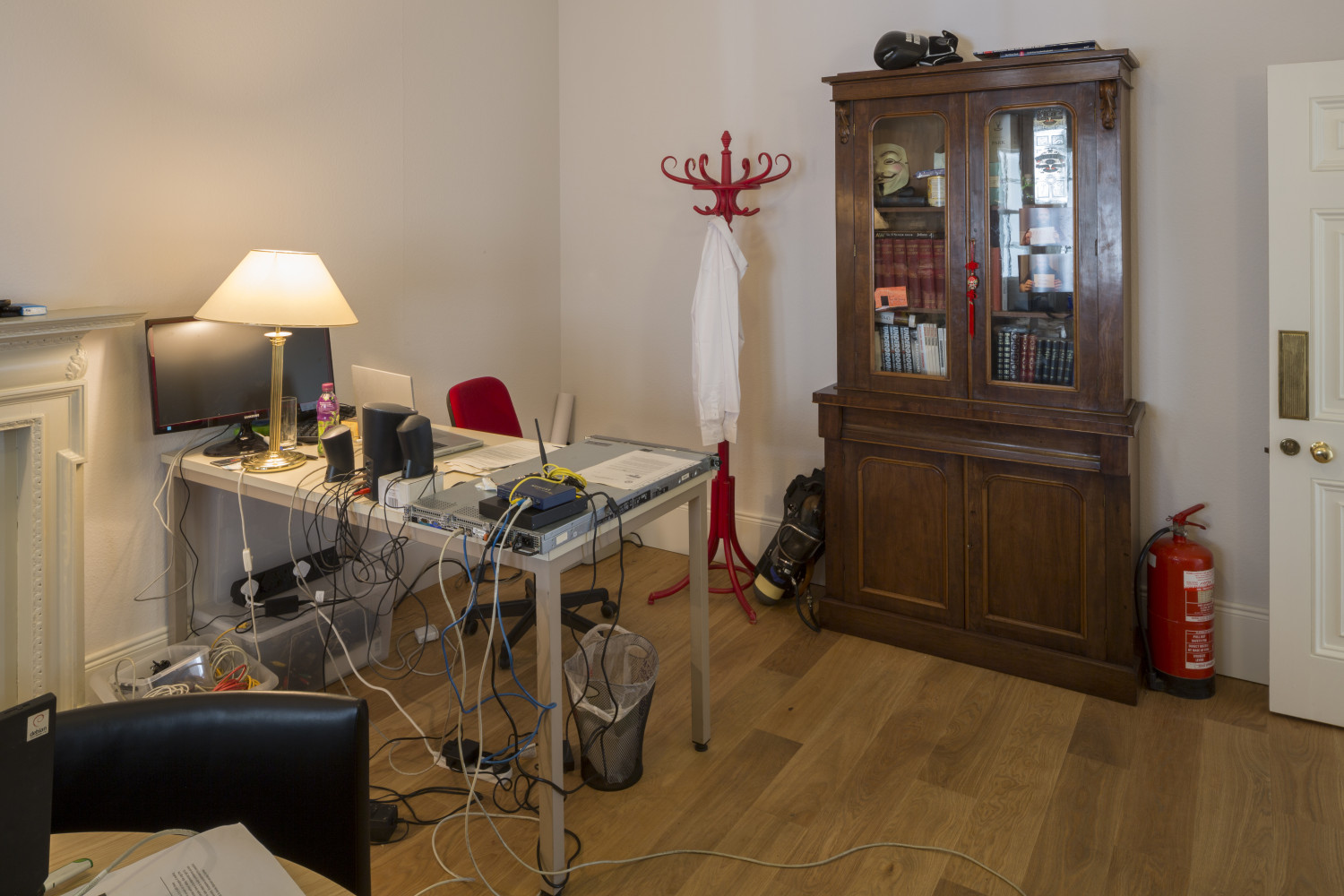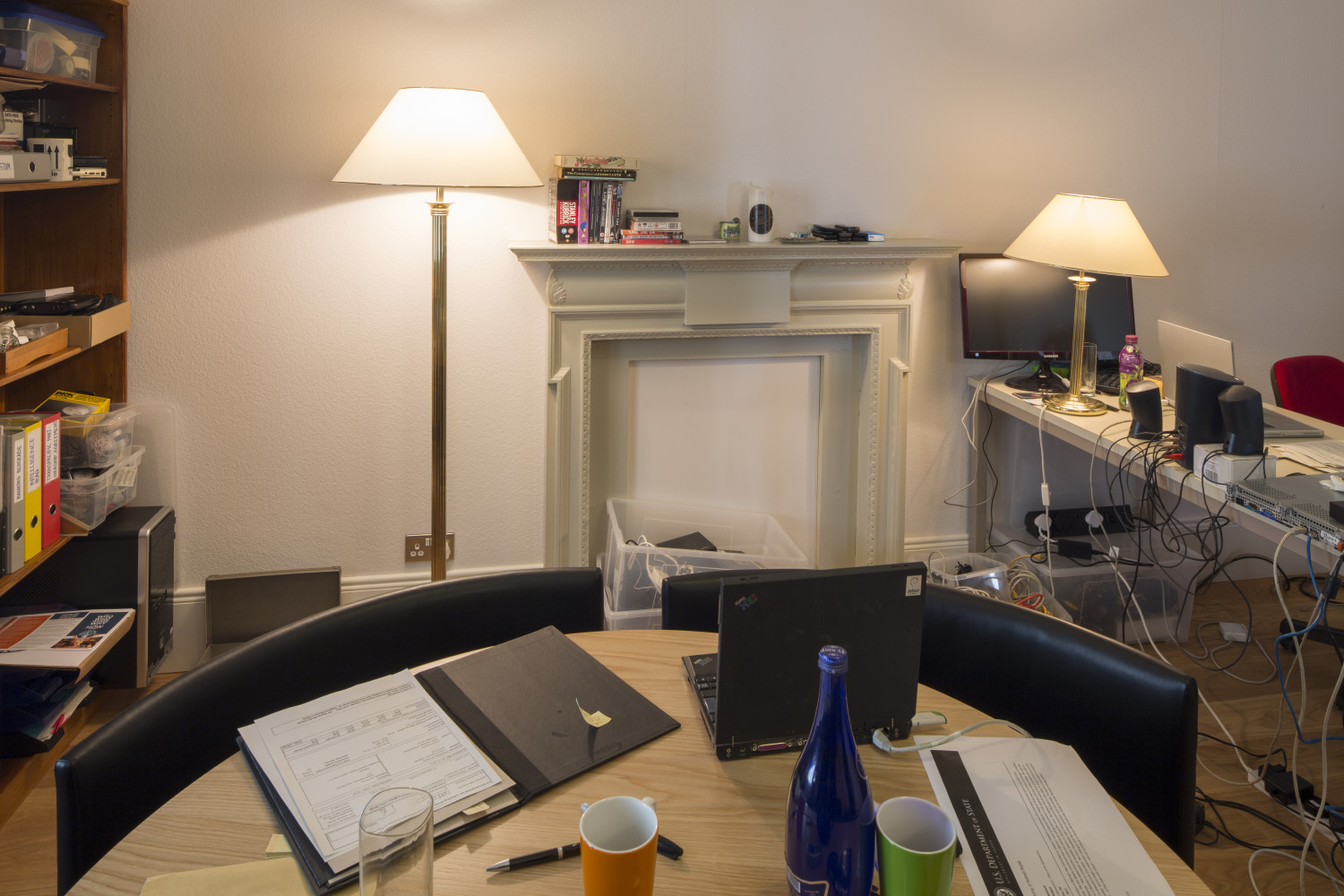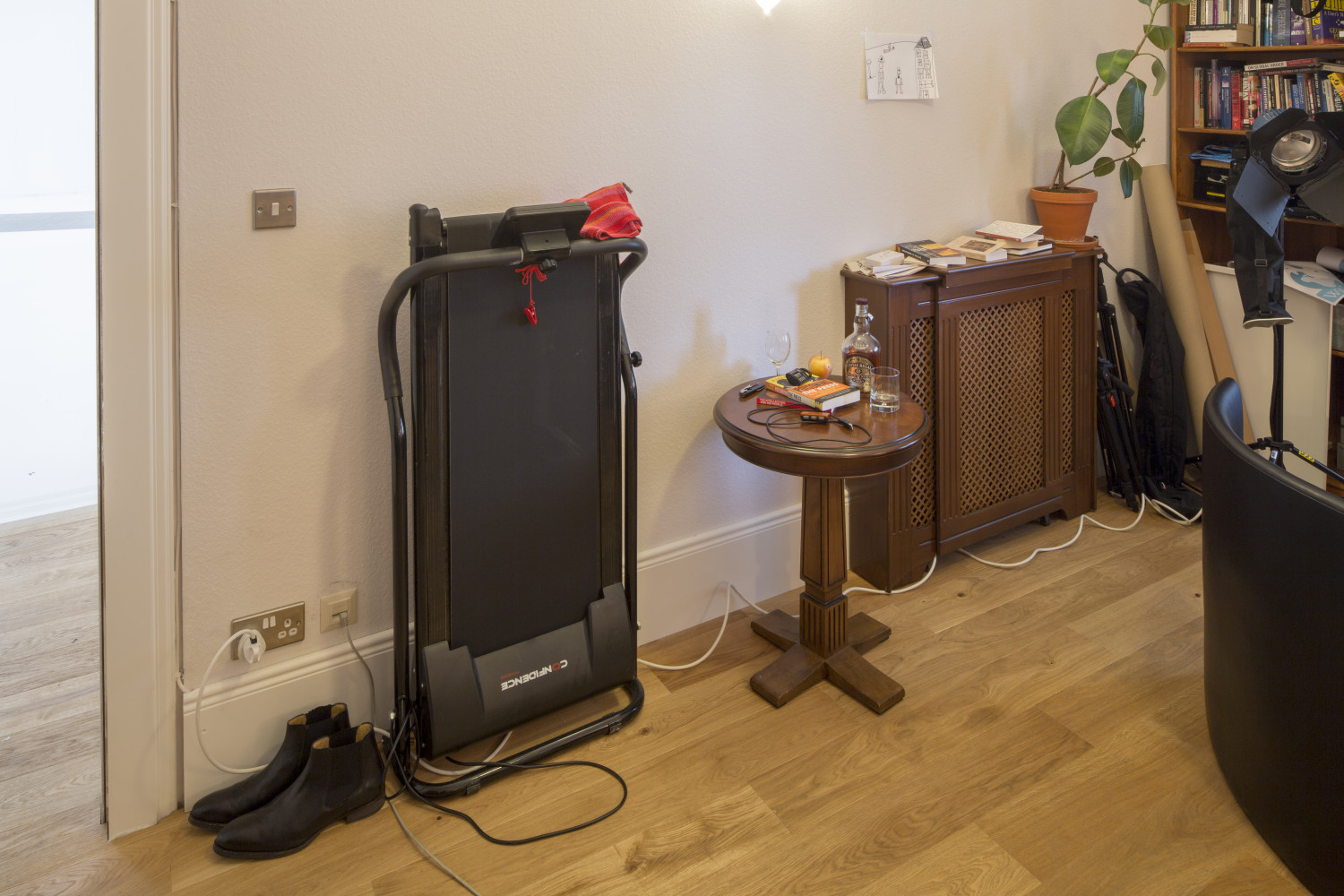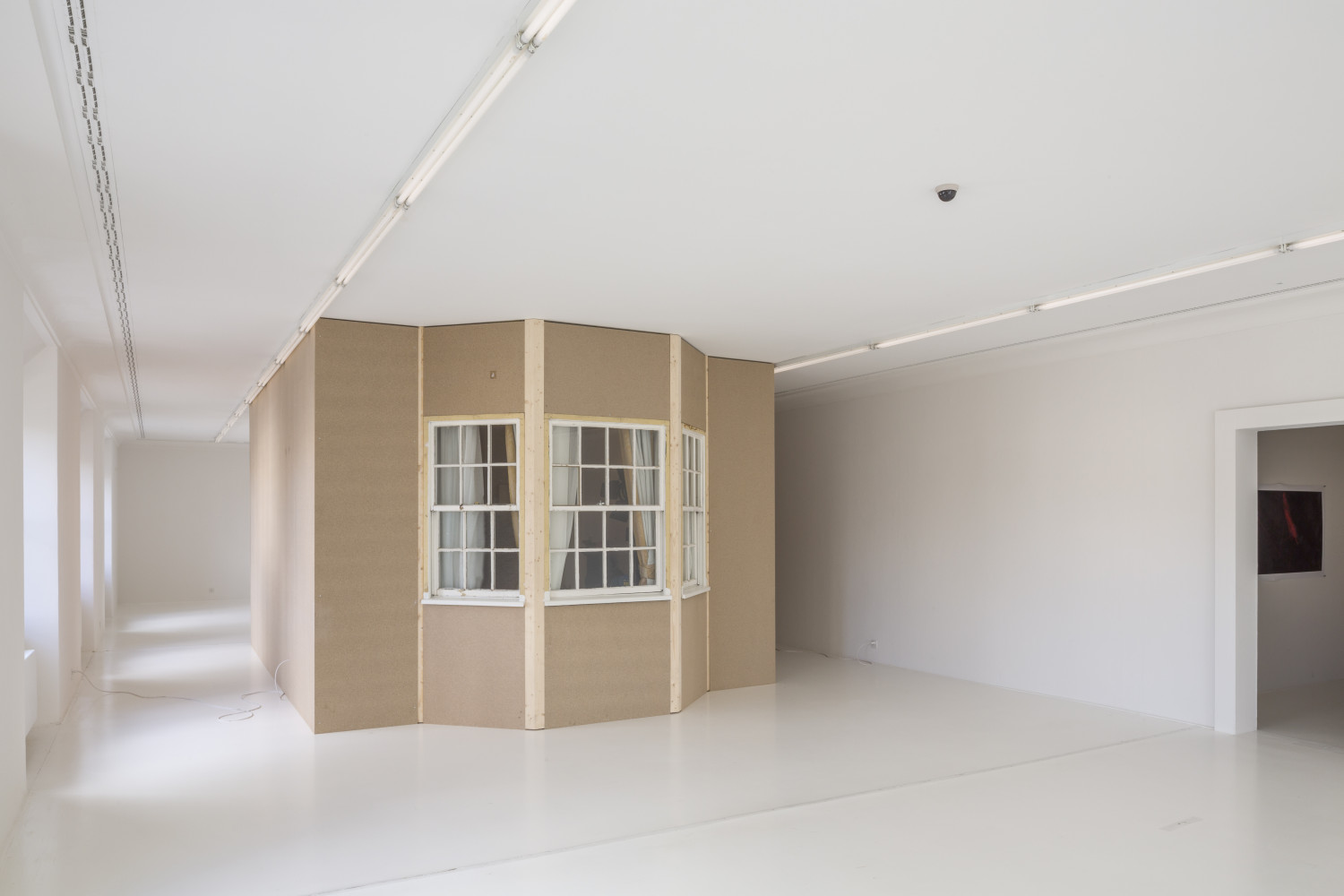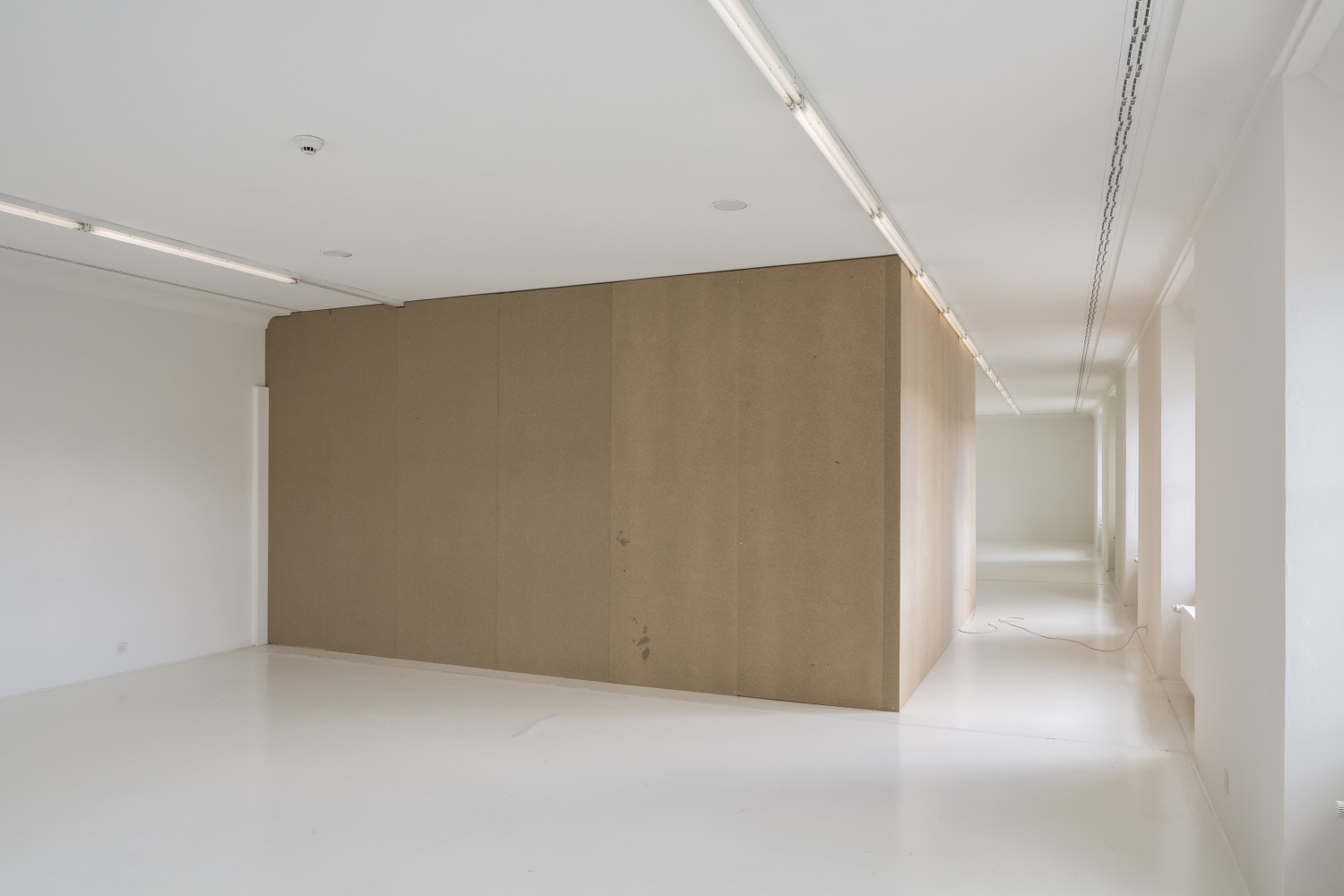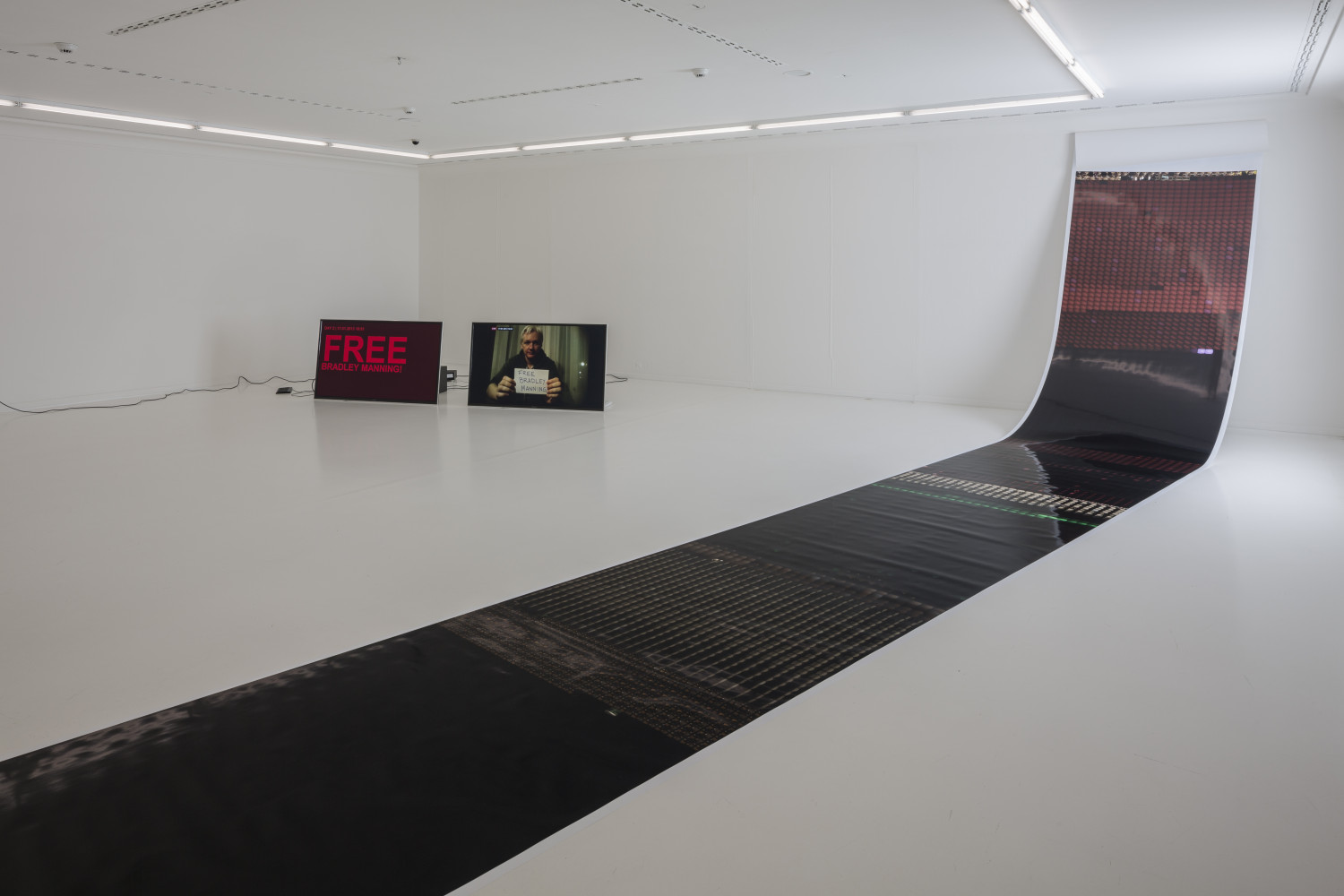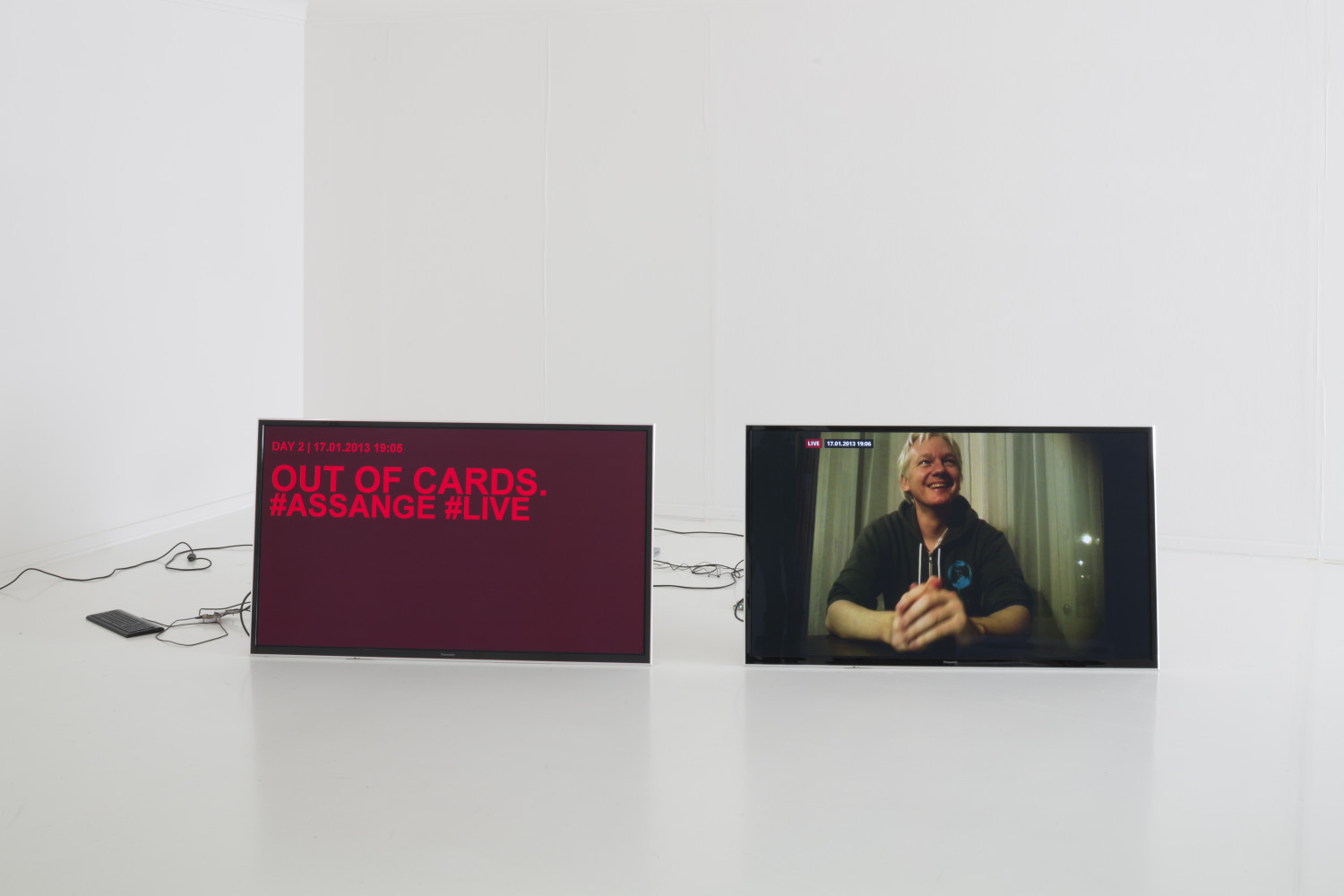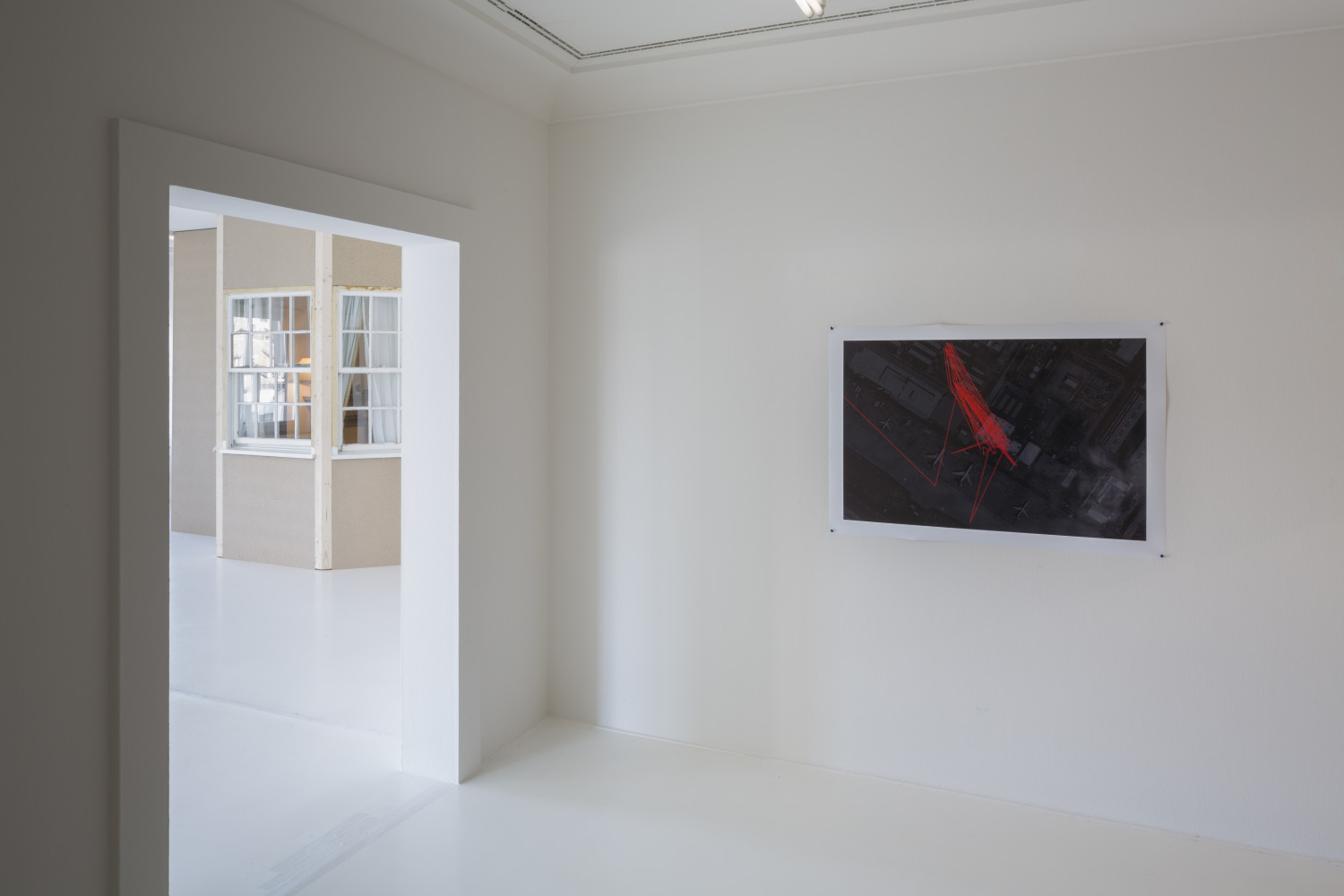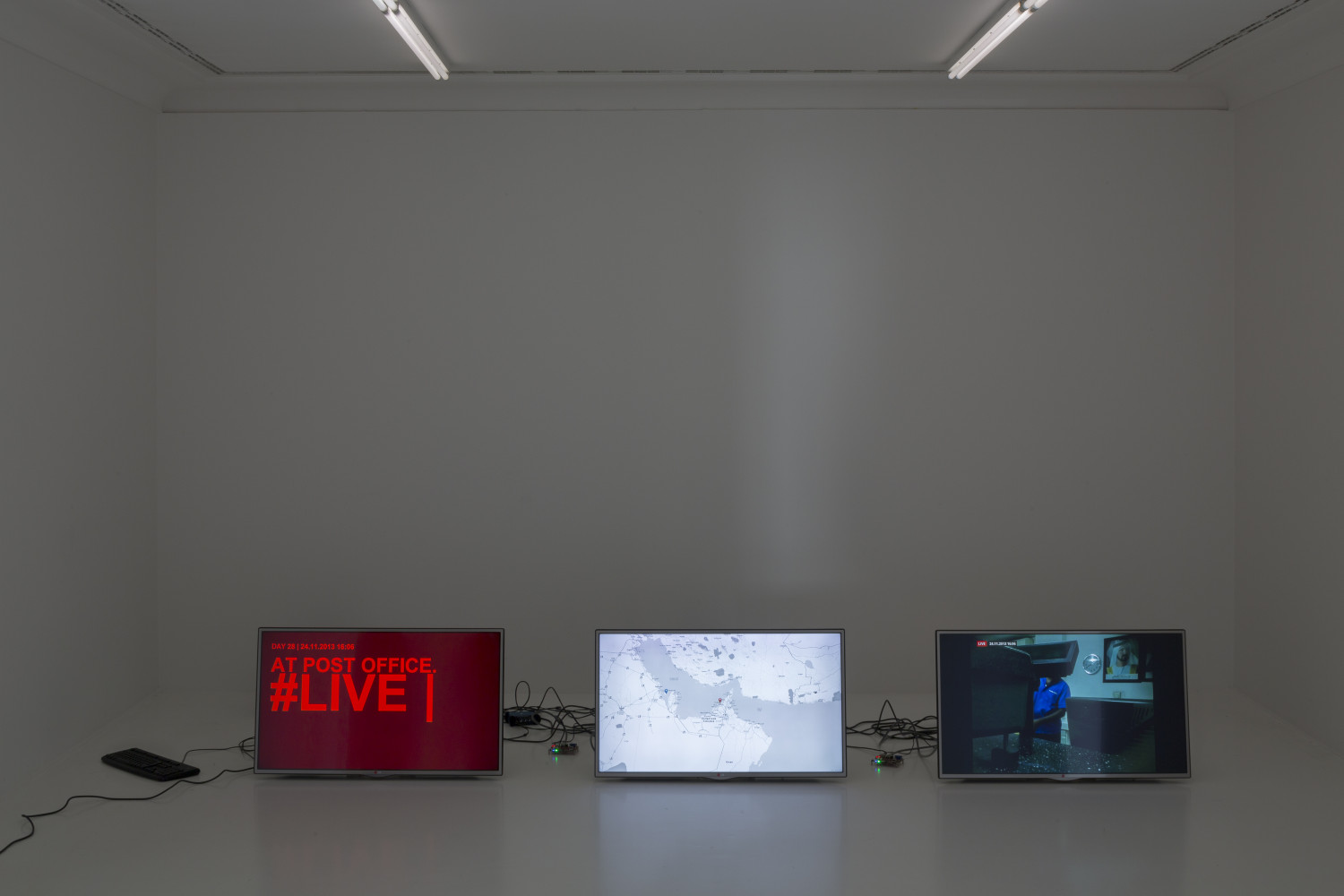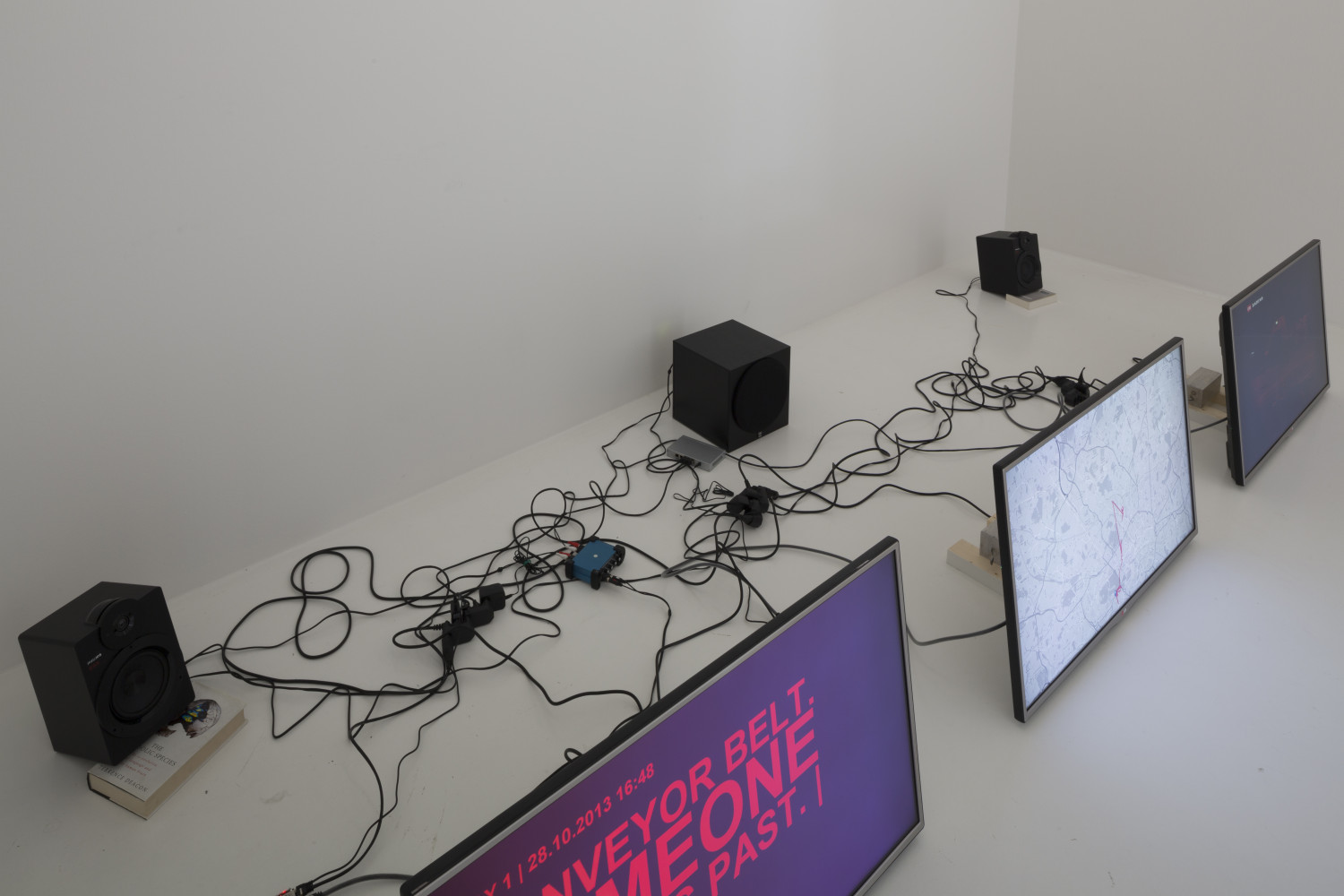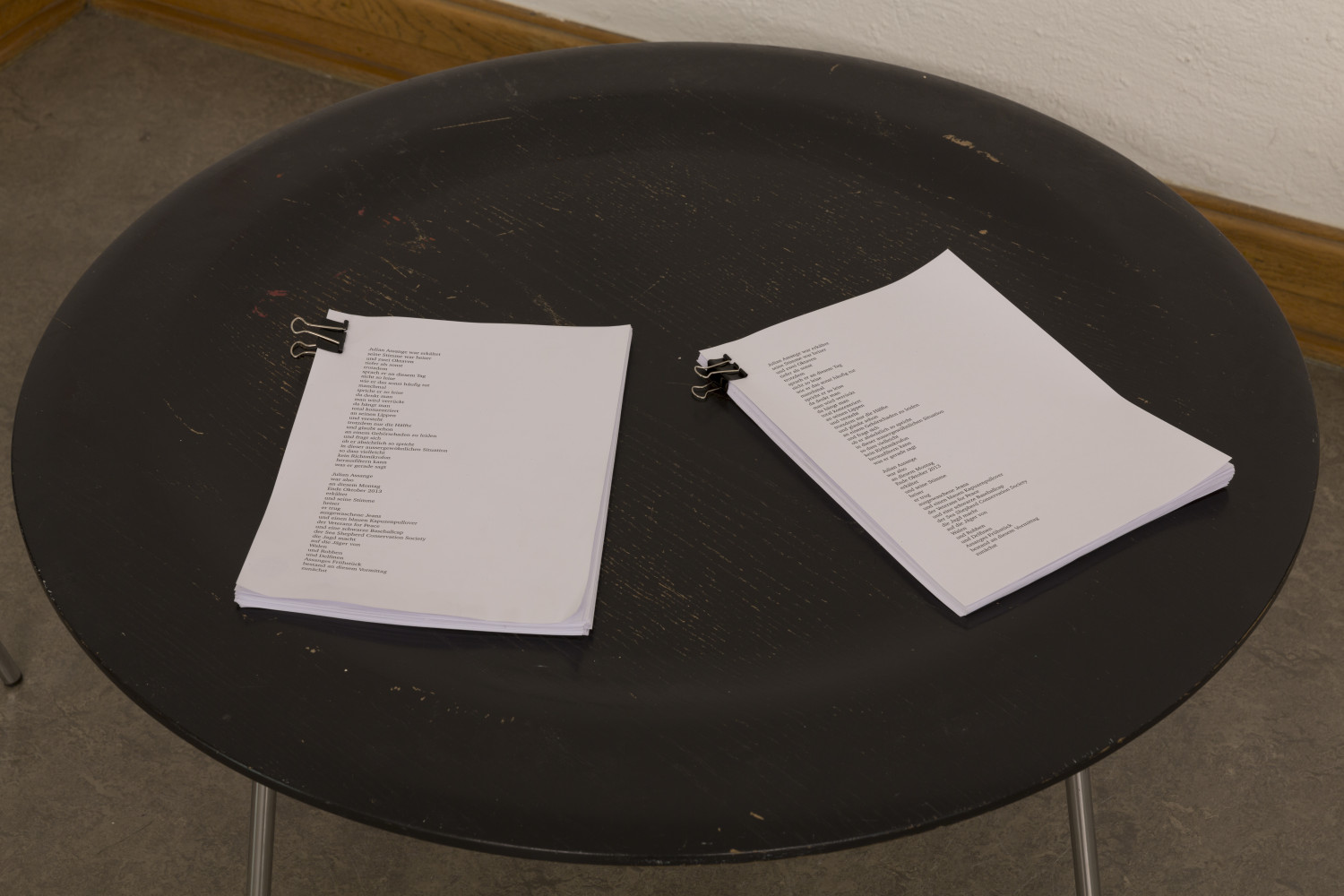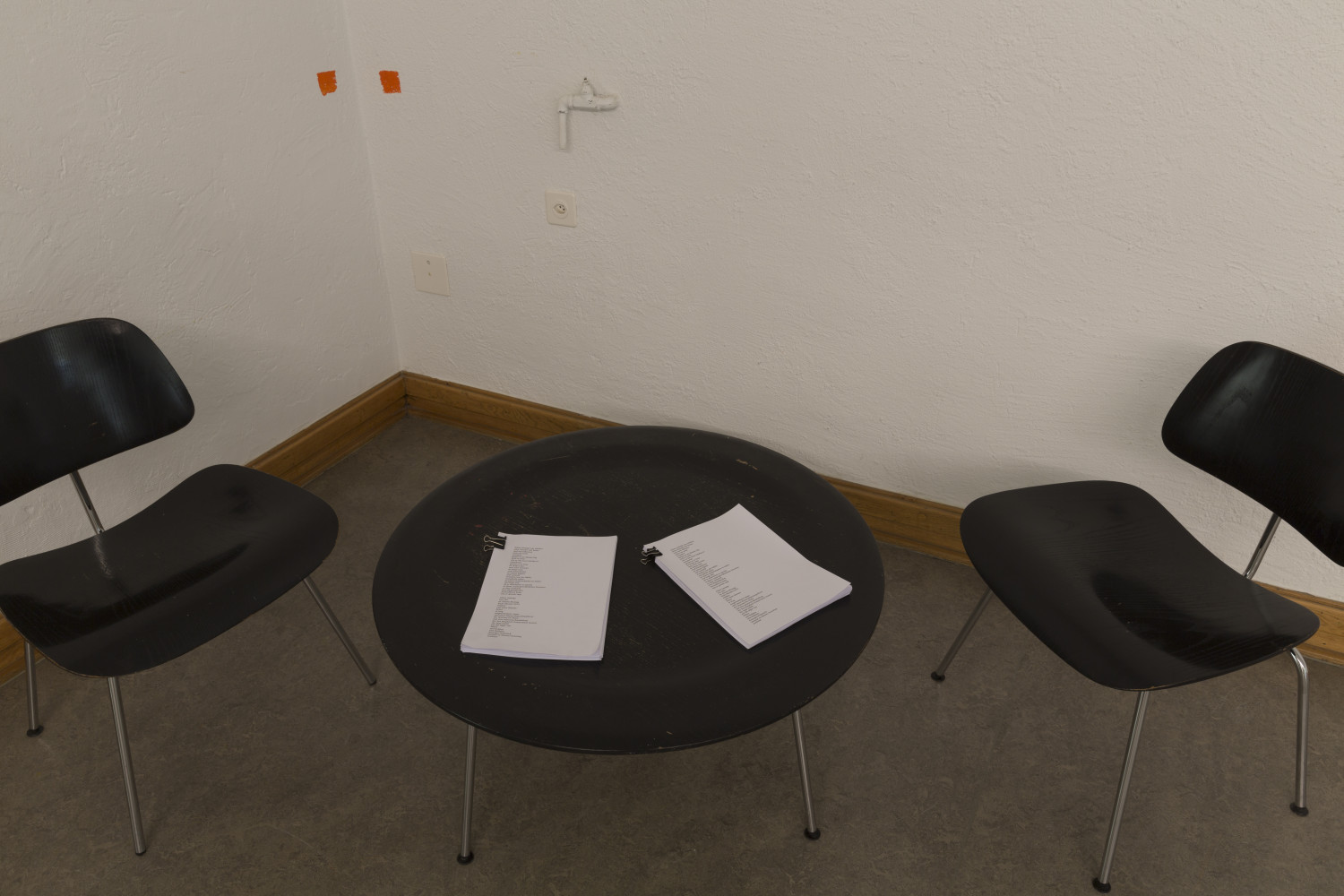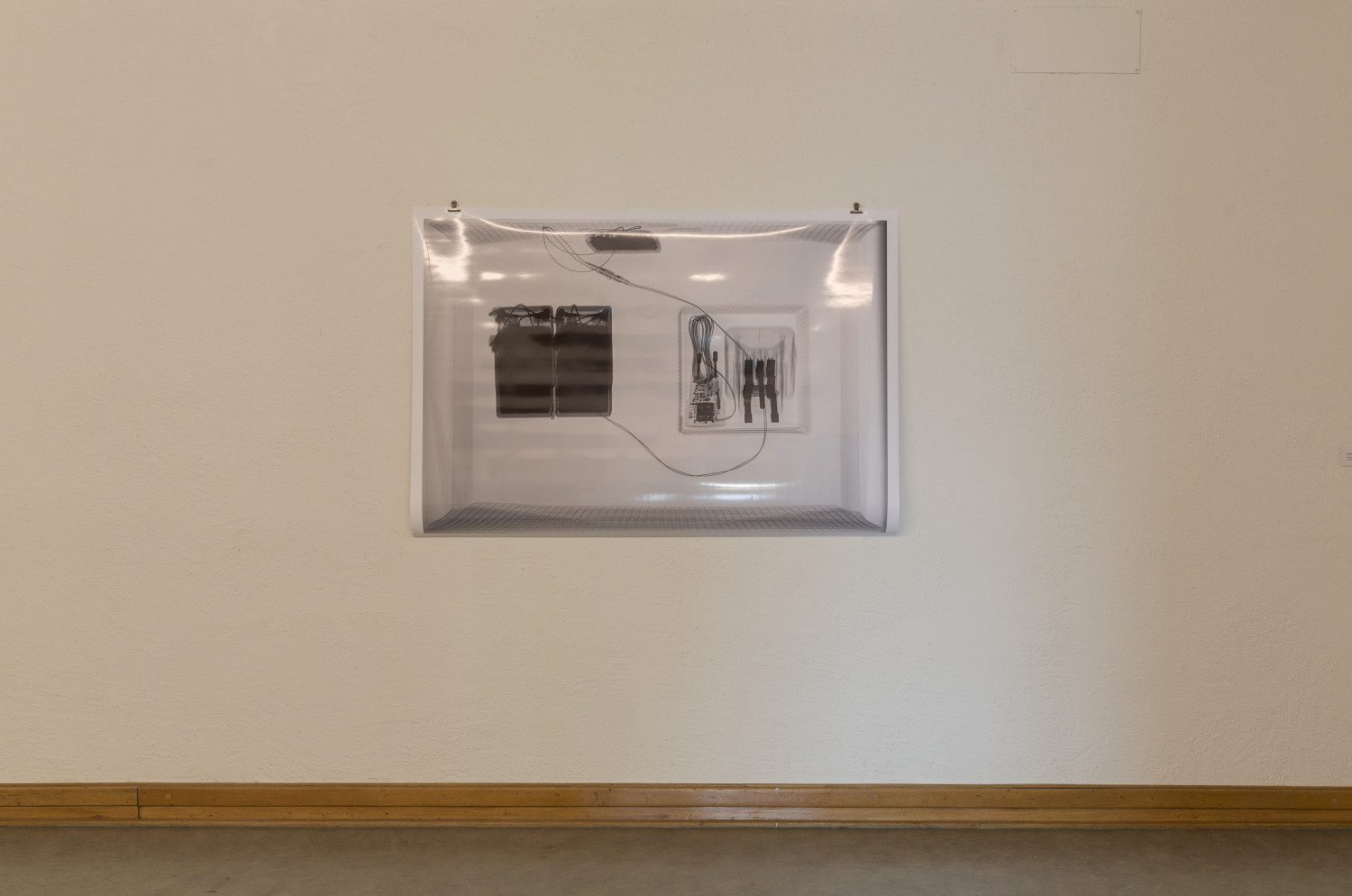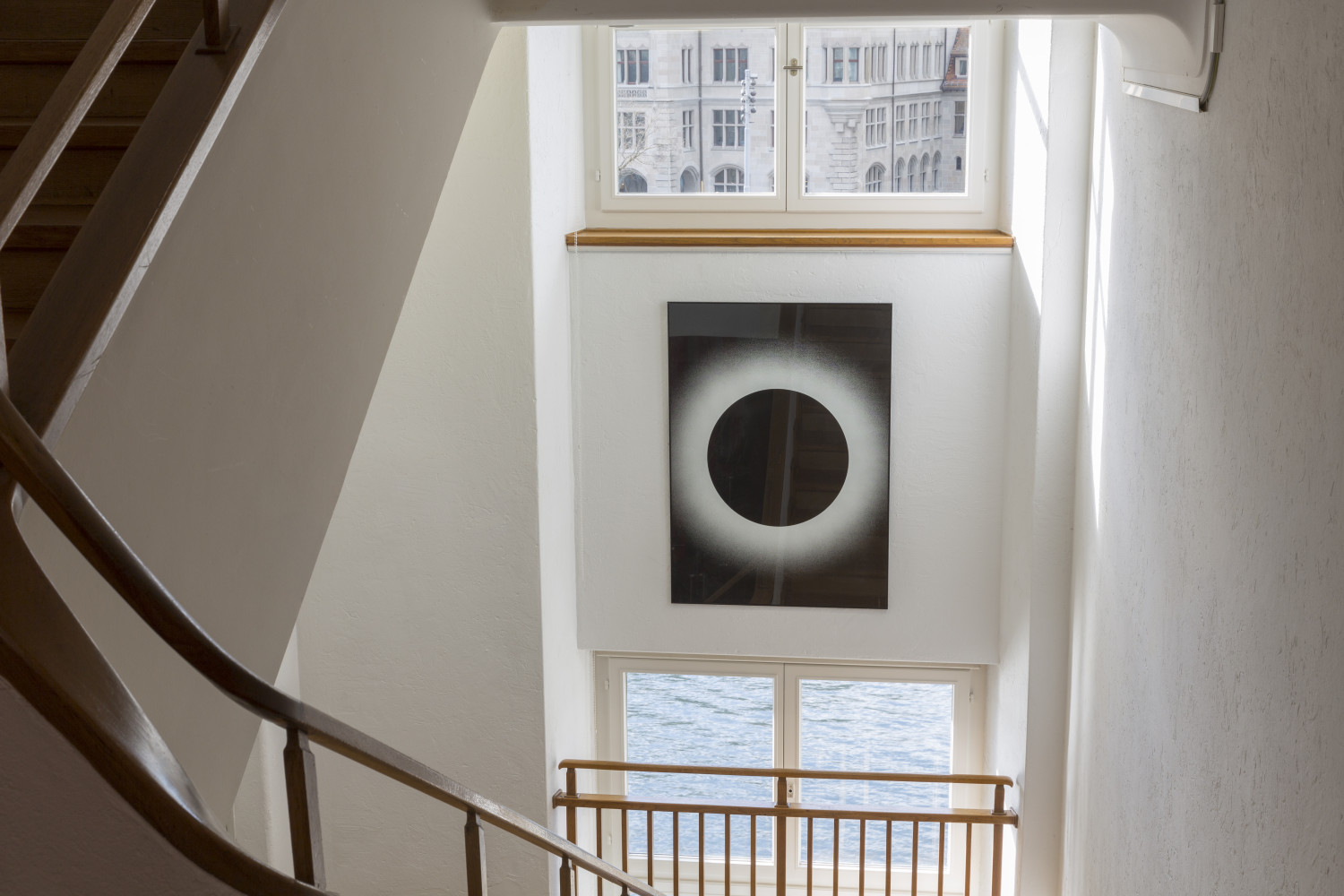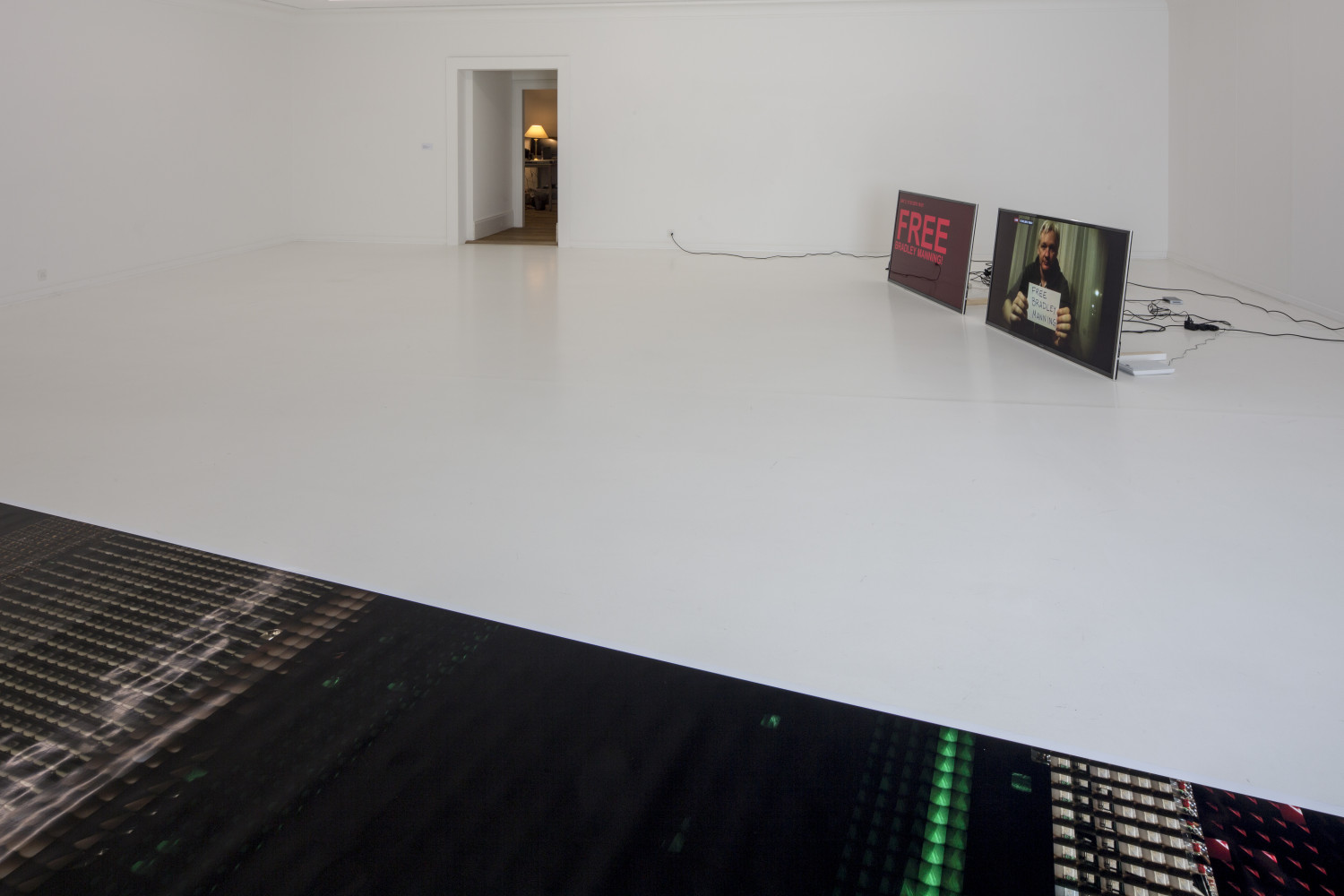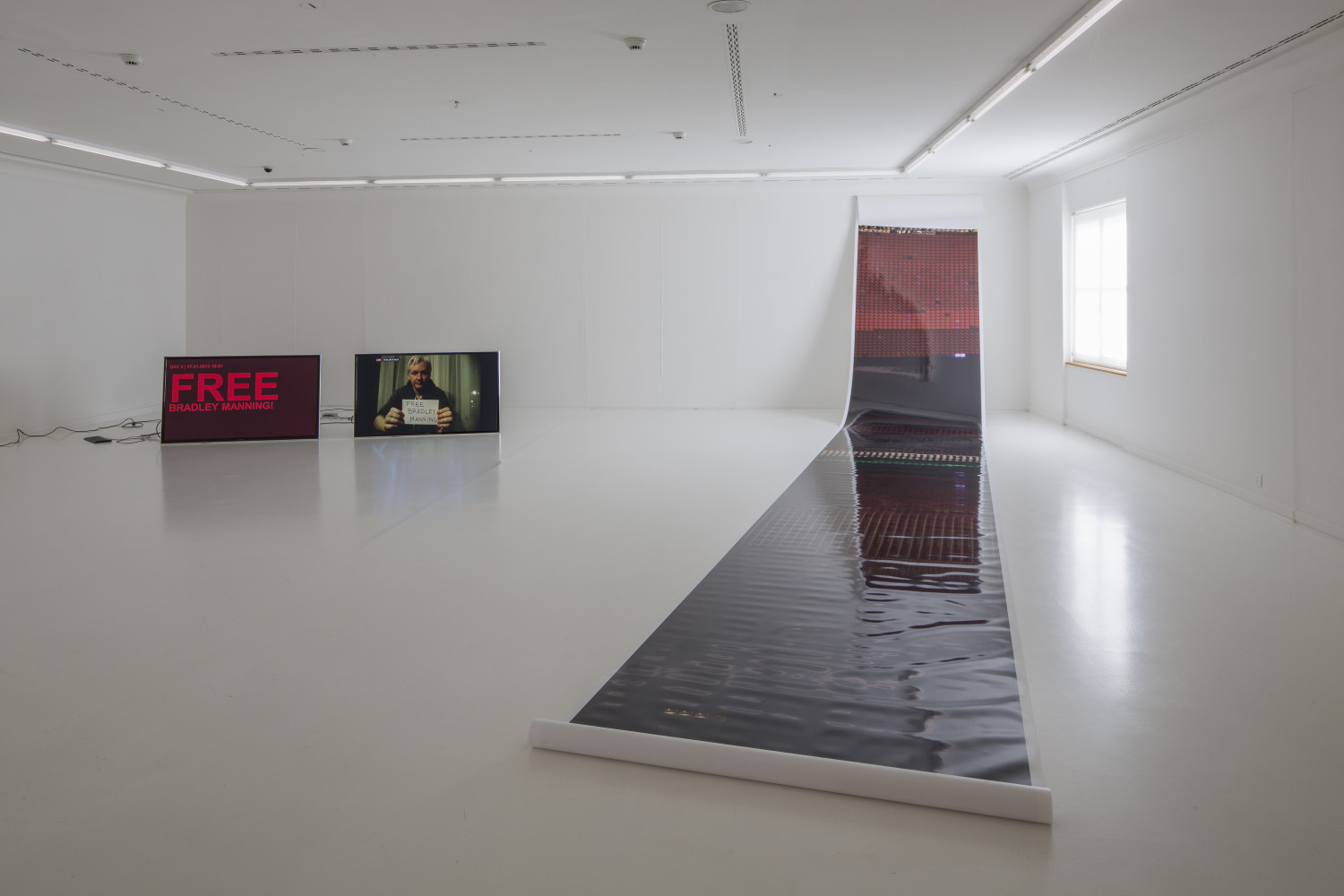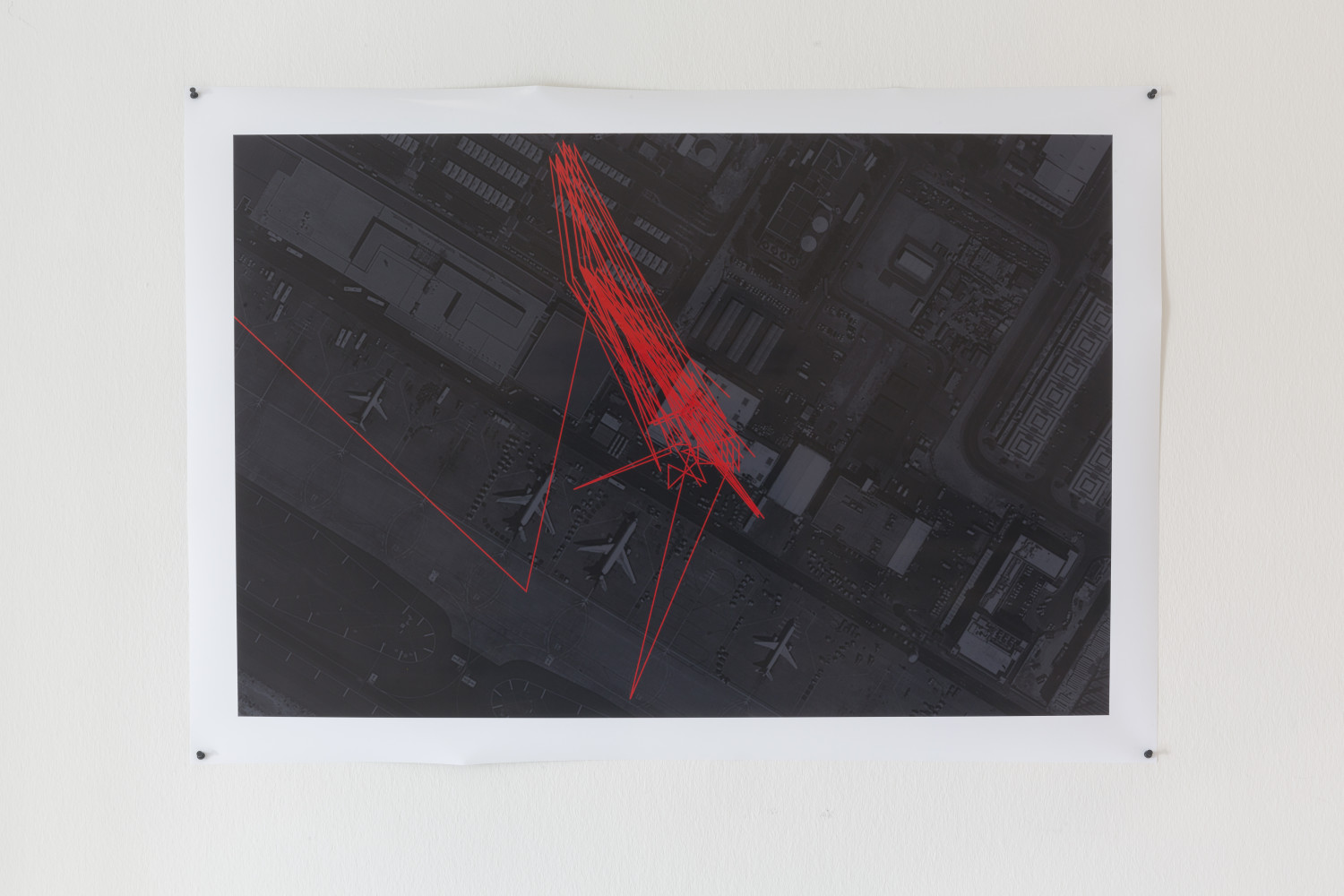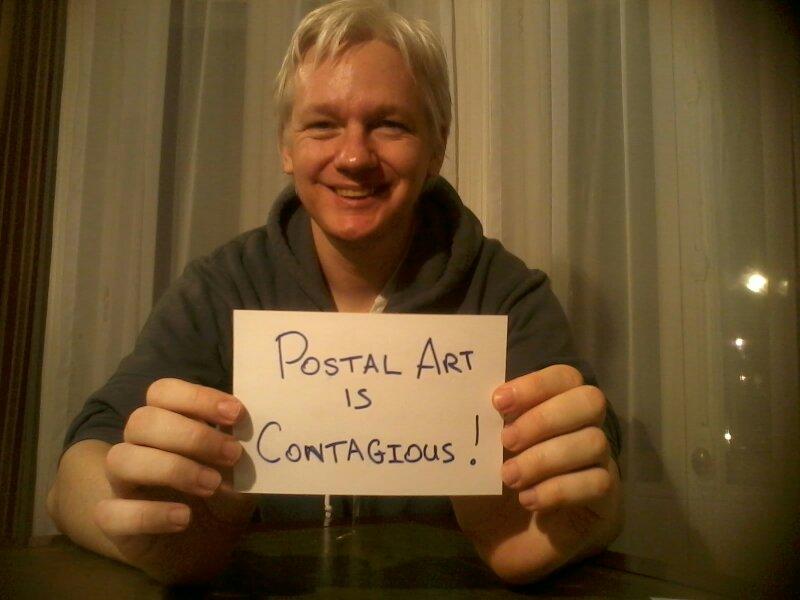
1 attempt, 121.5 km, 30 hours, 58 min., 13 sec., 4 distribution centres, 4 batteries, 350 tweets, 11 015 live images, 4 898 black images.
A parcel, addressed to Mr. Assange, is live. Postal Art is contagious.
On 16 January 2013 !Mediengruppe Bitnik posted a parcel addressed to WikiLeaks founder Julian Assange at the Ecuadorian embassy in London. The parcel contained a camera which documented its journey by Royal Mail through a hole in the parcel. The images captured by the camera were transferred to a website and the Bitnik Twitter account in real time. So, as the parcel was slowly making its way towards the Ecuadorian embassy in London, anyone online could follow the parcel’s status and physically witness the parcels extraordinary delivery.
Would the parcel reach its intended destination? Or would it be removed from the postal system? Would it be possible to break through the physical barrier surrounding Assange?
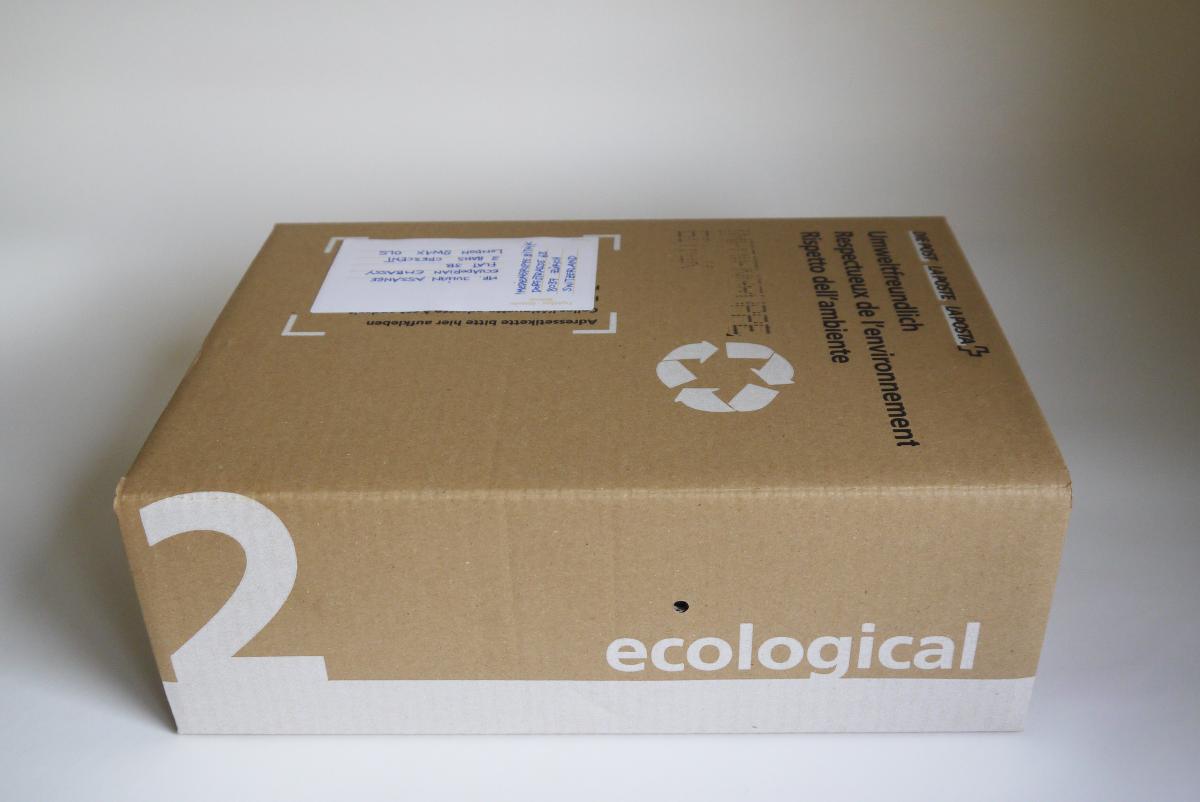
The parcel was a REALWORLDPING, a SYSTEM_TEST, inserted into a highly tense diplomatic crisis. Julian Assange has been living at the Ecuadorian embassy in London since June 2012. Although he was granted political asylum by Ecuador in August 2012, he is - to date - unable to leave the embassy premises for fear of being arrested by UK authorities.
After approx. 31 hours and a journey in various postal bags, vans and through delivery centres, the parcel was delivered to the Ecuadorian embassy in London in the afternoon of 17 January 2013. By that time several thousand people had gathered on Twitter to follow the tantalising and intense journey. The experiment was crowned by Julian Assange’s live performance for the camera.
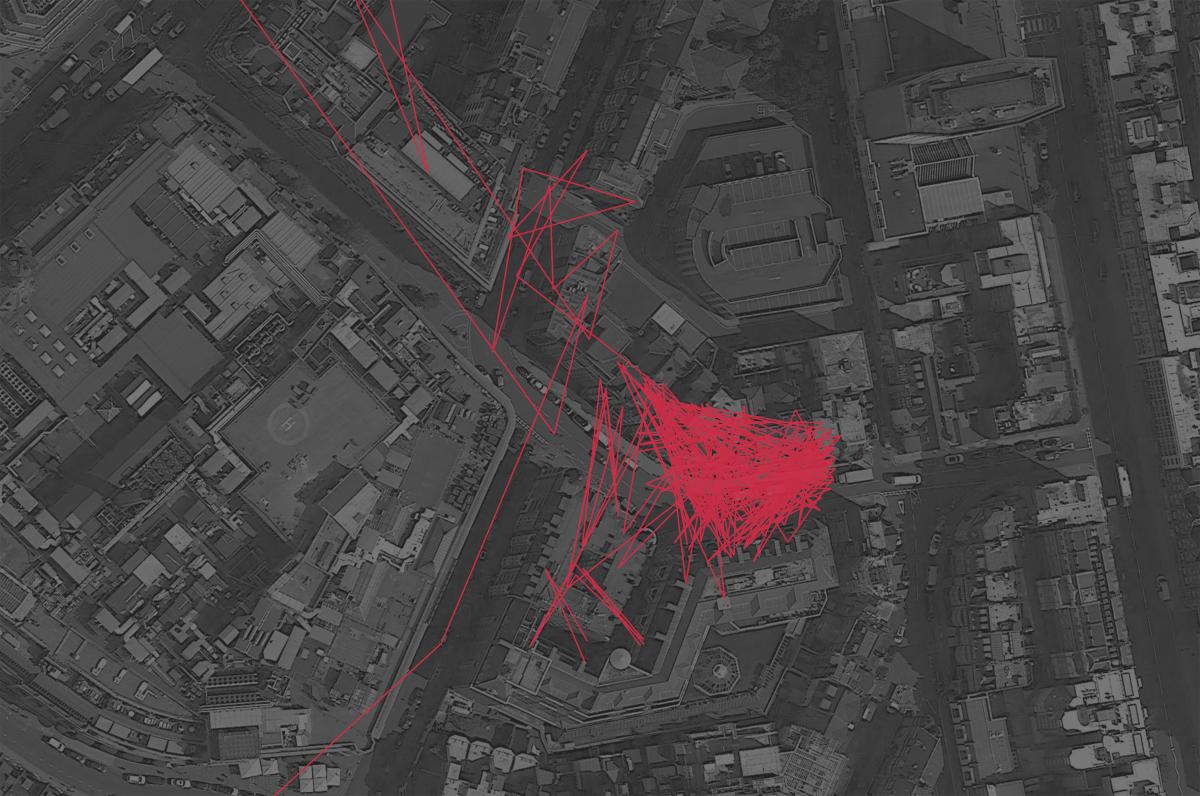
Delivery for Mr. Assange was the beginning of an extraordinary delivery bringing forward highly political issues circling around the relation between physical and virtual realities, geo-political boundaries and restrictions. Whereas the Internet was originally thought of as a transparent [cyber]space free of economic power and military force, and without privilege and prejudice, nowadays network operations and the Internet culture are more opaque, surveilled and controlled than ever. In this state of being, the classic postal delivery method seems to be the only way to reach out and break through the physical barriers surrounding Julian Assange.
The real-time performance continued in October 2013: aiming to establish communication with Nabeel Rajab, a second parcel with a hidden camera was sent by post, this time from Julian Assange to Nabeel Rajab, a Bahraini human rights activist who was arrested various times for tweeting during national uprisings in Bahrain. The parcel contained an appeal for Nabeel Rajab’s release. After the first parcel was stopped at Dubai customs the second one was seized too; both parcels never reached Rajab.
Do you keep yourself up at night – sweat pooling around you, your eyeballs pulsating – wondering what it would feel like to be packed up into a cardboard box and mailed to Julian Assange? Well, !Mediengruppe Bitnik – a group of Swiss artists – have kindly done everything they can to cure your insomnia by sending a parcel from Hackney to the Ecuadorian embassy.
Since the package began its journey, they have been tracking it via GPS and uploading the images taken by the camera at regular intervals, showing an agreeably clean mail processing plant in east London, among other scintillating sites. Alas, still none showing Miss Moneypenny.
What is the meaning of this parcel blitzkrieg? What else is in this mysterious package? Why can’t I stop gawking at the crotch-level interiors of some foreign Post Office? Why are these Twitter updates so addictive?
Assange's Room (2014)
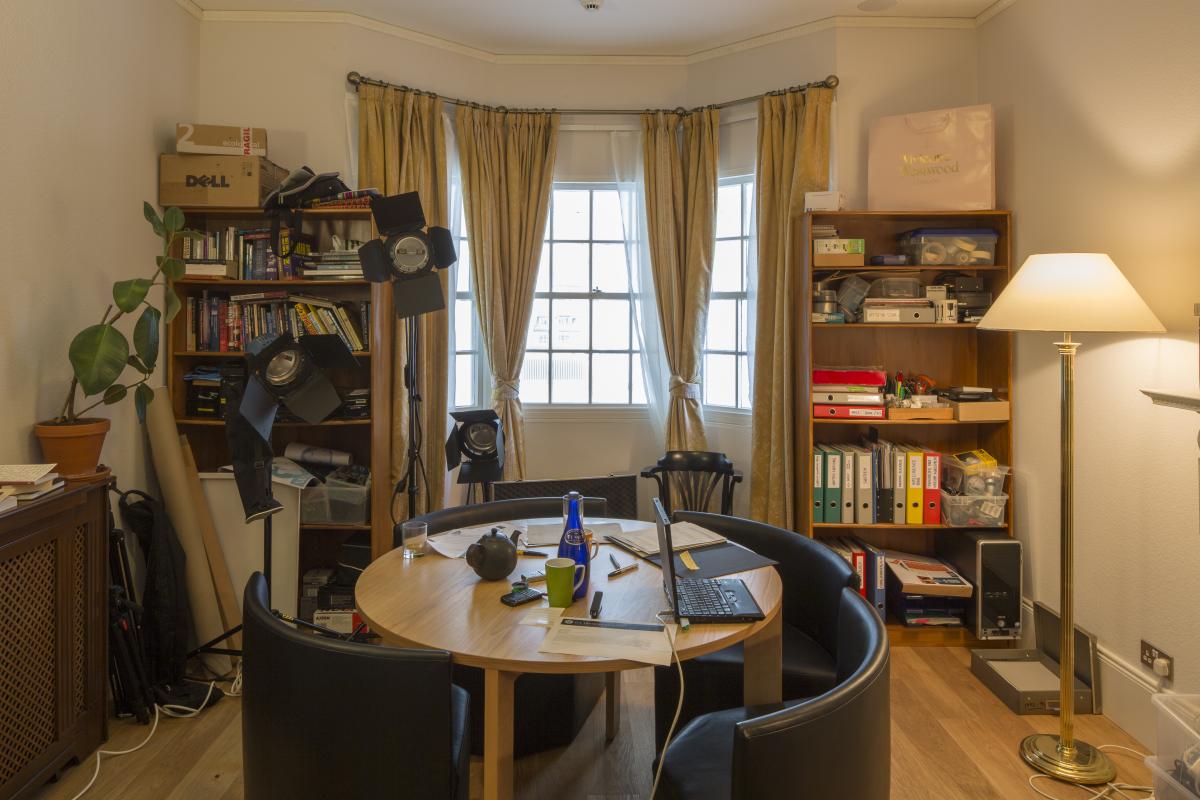
Assange’s Room is a detailed reconstruction of WikiLeaks founder Julian Assange’s study at the Ecuadorian embassy in London. The room is not re-created from detailed photographs or plans, but purely from the memory of !Mediengruppe Bitnik who visited Julian Assange on various occasions. The work is part of the series Delivery for Mr. Assange. It follows the live online performance piece, where, on 16 January 2013, Bitnik sent a parcel to Julian Assange, containing a hidden camera.
The stalemate around the Ecuadorian embassy is one of the rare physical manifestations of the ongoing crisis between the powers that be and freedom-of-information aficionados. Due to the cordon of British police, Julian Assange has no access to the outside and is confined to the highly regulated interior of the embassy. Visitors cannot enter or exit the building without checks, documentation, and security processes - very few people are permitted to either enter or leave, or actually know what it looks like - yet this is the space from which WikiLeaks still operates and reaches millions of people worldwide. Thanks to an Internet connection and an expert understanding of both technological and political networks, WikiLeaks remains operational from the confines of a 20 square metre space.
The life-size replication presents the ‘world’ of Assange and his daily physical experience. A human body entrapped in a building. By moving Assange’s work and influence out of the solely virtual into the real world, Bitnik creates a tangible sketch of everyday life that visitors can freely access or leave. By materialising an otherwise abstract question of confinement, control, and counter-power, we experience more acutely the paradox of one state nervously observing the other state from within.
Photo: Mancia/Bodmer, FBMstudio
